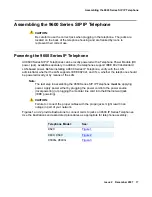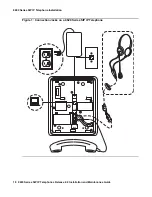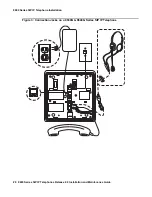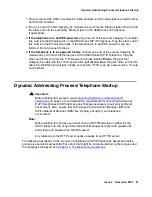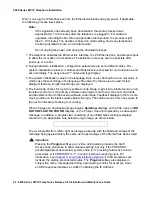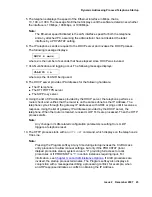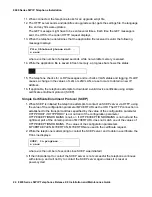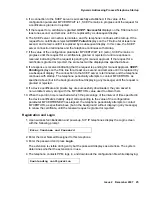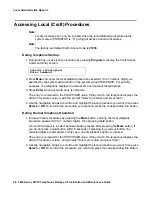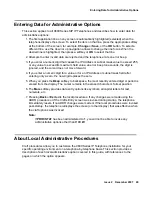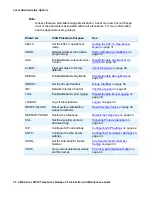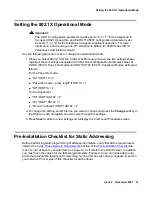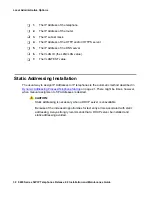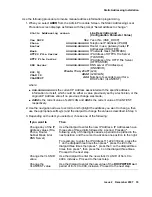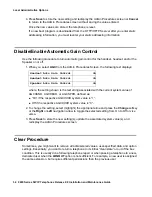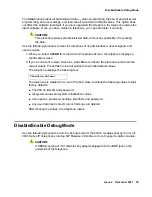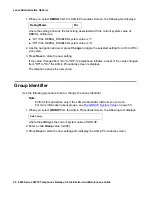
Dynamic Addressing Process/Telephone Startup
Issue 2 December 2007
23
5. The telephone displays the speed of the Ethernet interface in Mbps, that is,
10, 100, or 1000. The message No Ethernet displays until the software determines whether
the interface is 10 Mbps, 100 Mbps, or 1000Mbps.
Note:
Note:
The Ethernet speed indicated is the LAN interface speed for both the telephone
and any attached PC, assuming the administrator has not disabled the latter
interface by a PHY2STAT setting.
6. The IP telephone sends a request to the DHCP server and invokes the DHCP process.
The following message displays:
where
s
is the number of seconds that have elapsed since DHCP was invoked.
7. VLAN verification and tagging occur. The following message displays:
where
n
is the VLAN ID being used.
8. The DHCP server provides IP Addresses for the following hardware:
●
The IP telephone
●
The HTTP/HTTPS server
●
The SIP Proxy server
9. Using the list of IP Addresses provided by the DHCP server, the telephone performs a
router check and verifies that the router is on the same subnet as the IP Address. The
telephone cycles through the gateway IP Addresses with ARPs or pings until it receives a
response.Using the list of gateway IP Addresses provided by the DHCP server, the
telephone. When the router is located, received LLDP TLVs are processed. Then the HTTP
process starts.
Note:
Note:
Any change in VLAN-related configuration parameters resulting from LLDP
triggers a telephone reset.
10. The HTTP process starts with an
HTTP GET
command, which displays on the telephone’s
Title Line.
Note:
Note:
Pressing the Program softkey at any time during startup invokes the Craft Access
entry procedure to allow manual settings, but only if the PROCSTAT (local
dialpad procedure status) system value is “0” providing full access to local
procedures or if PROCSTAT is “1” in certain instances requiring input. For
information, see
Chapter 3: Local Administrative Options
. If Craft procedures are
invoked, the startup process terminates. The Program softkey also displays in
conjunction with a message describing a processing conflict, for example, when
an ARP response indicates a conflict in obtaining the IP Address.
DHCP:
s
secs
VLAN ID = n









